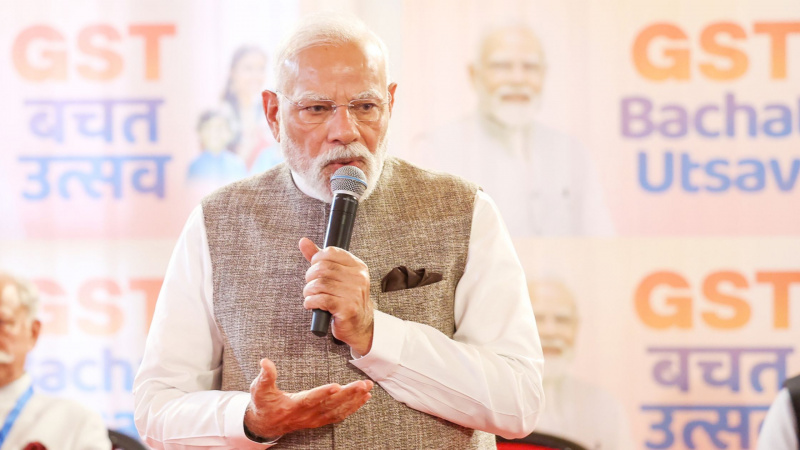Things You Need to Know about Drone Legalization in India
Needless to say, these are an amazing innovation of modern technology and science. Nearly everything can be carried out using drones and every other Indian indu
- by B2B Desk 2018-12-08 10:31:10
Drones are the latest sensation in the modern world and have been grabbing eyeballs ever since the common people came to know about them.
Needless to say, these are an amazing innovation of modern technology and science. Nearly everything can be carried out using drones and every other Indian industry are making use if it nowadays.
You Might Also Like To Read Ashish Kashyap now launches IndWealth After Ibibo
But, until 30th November 2018 drones were illegal in India. Not everybody has the right of occupying a drone in their personal collection. However, in recent times Ministry of Civil Aviation of India has legalised flying drones. On August 27, 2018, the new rule related to Drone came out and it is put into effect from December 1, 2018.
Based on the current drone laws, 12 things every Indian need to know before thinking about buying a drone following as:
- The government will issue a Unique Identification Number (UIN) for every drone except the Nano category enlisted ones. The numbers will make the tracking system easier for the Government. Even the drones that are owned by intelligence agencies and government have to be registered under this unique number.
- Commercial drones need a permit before being able to engage in various operations. Flying a drone for commercial purpose without a permit is completely illegal.
- Only Nano and Micro categorized drones are able to fly without permits. Nano categorized drones can fly up to 50 feet and micro categorized drones are able to fly 200 feet maximum.
- The rule says that drones can be flown vertically maximum 400 feet.During the flight, drone pilots need to maintain always linear visual sight and this rule is legalised only at daytime.
- The regulation also holds necessary information about the training requirements and required manufacturing standards. The pilots of the drones categorized under small and above need proper training to fly a drone.
- There are multiple ‘No Fly Zones' and flying a drone in these restricted areas can cost you bail money or a few months in jail. The ‘No Fly Zones' are airport areas, Delhi's Vijay Chowk, international borders, State Capital's State Secretariat Complex, military installations, and strategic locations.
- Except for Nano and micro, all of the other drones require Unmanned Aircraft Operator Permit (UPAO)
- If you are willing to fly your drone at the controlled airspace area then you have to file a flight plan. It will help you to obtain a unique Flight Information Center (FIC) or Air Defence Clearance (ADC) number.
- Foreigners are still not allowed to be a drone pilot in India. However, foreigners can lease a drone from Indian entity for commercial purpose and the entity will let the foreign drone pilot access a Unique Identification Number (UIN) from DGCA.
- There are five categories of drone among which four categories need registration. The five categories are Nano, Micro, Small, Medium and Large. Nano category drones weigh around 250 grams and less and this is the only category which does not need registration. Microdrones weigh around 250 grams to 2kgs. Small drones weigh around 2kgs to 25kgs. Medium drones weigh around 25kgs to 150kgs. and Large drones’ weighing starts from 150kgs.
- Except for the Nano categorized drones, all of the other types of drones need to hold certain mandatory equipments such as GPS, RTH, ID Plate, Anti-Collision light, a flight controller with flight data logging ability, No Permission No Takeoff (NPNT) or RF ID and SIM.
- Drone pilots have to ask for permission from the Digital Sky Platform of India before every flight. India's aviation industry has legalised a mobile app through which pilots can request for flights. If the permission gets accepted then only drone pilots can fly. Without permission, the drone won't take off. The system is being called ‘No Permission No Takeoff (NPNT)'. The drone operators have to register the drones they own and have to request for permission from Digital Sky Platform of India to successfully complete the flight. DGCA website consists of the required details related to the Digital Sky Platform of India. The details are available from December 1, 2018.
The legalisation of drones in India's aviation history will bring a massive change in all aspects of life. The aerial pictures will help the rescue committees of India hugely. The drone regulation subject is going on from 2016. The regulations passed another round of examination in 2017, November. In 2018 January Drone Federation of India was built by the start-ups and drone companies. The Drone association wisely suggested some changes in the drone regulations drafted by the Government of India. Indian railways also came hand in hand to make easier the process of monitoring in the remote places.

POPULAR POSTS
The Agentic Revolution: Why Salesforce Is Betting Its Future on AI Agents
by Shan, 2025-11-05 10:29:23
OpenAI Offers ChatGPT Go Free in India: What’s Behind This Big AI Giveaway?
by Shan, 2025-10-28 12:19:11
Zoho Products: Complete List, Launch Years, and What Each One Does
by Shan, 2025-10-13 12:11:43
Arattai vs WhatsApp: Which Messaging App Should You Choose in 2025?
by Shan, 2025-10-10 11:55:06
Top Buy Now Pay Later (BNPL) Apps for Easy Shopping in 2025
by Shan, 2025-09-22 10:56:23
iPhone 17 Sale in India Begins: Full Price List, Launch Offers and Store Availability
by Shan, 2025-09-19 12:00:45
Apple September 2025 Event Recap: iPhone 17, iPhone Air, Apple Watch Series 11, and India Pricing Revealed
by Shan, 2025-09-10 09:55:45
RECENTLY PUBLISHED

Loan EMIs to Drop as RBI Slashes Repo Rate - Full MPC December 2025 Highlights
- by Shan, 2025-12-05 11:49:44

Pine Labs IPO 2025: Listing Date, Grey Market Premium, and Expert Outlook
- by Shan, 2025-11-05 09:57:07

Top 10 Insurance Companies in India 2026: Life, Health, and General Insurance Leaders Explained
- by Shan, 2025-10-30 10:06:42

Best Silver Investment Platforms for 2025: From CFDs to Digital Vaults Explained
- by Shan, 2025-10-23 12:22:46

Zoho Mail vs Gmail (2025): Which Email Platform Is Best for Businesses, Startups, and Students?
- by Shan, 2025-10-09 12:17:26

PM Modi Launches GST Bachat Utsav: Lower Taxes, More Savings for Every Indian Household
- by Shan, 2025-09-24 12:20:59




 Subscribe now
Subscribe now 